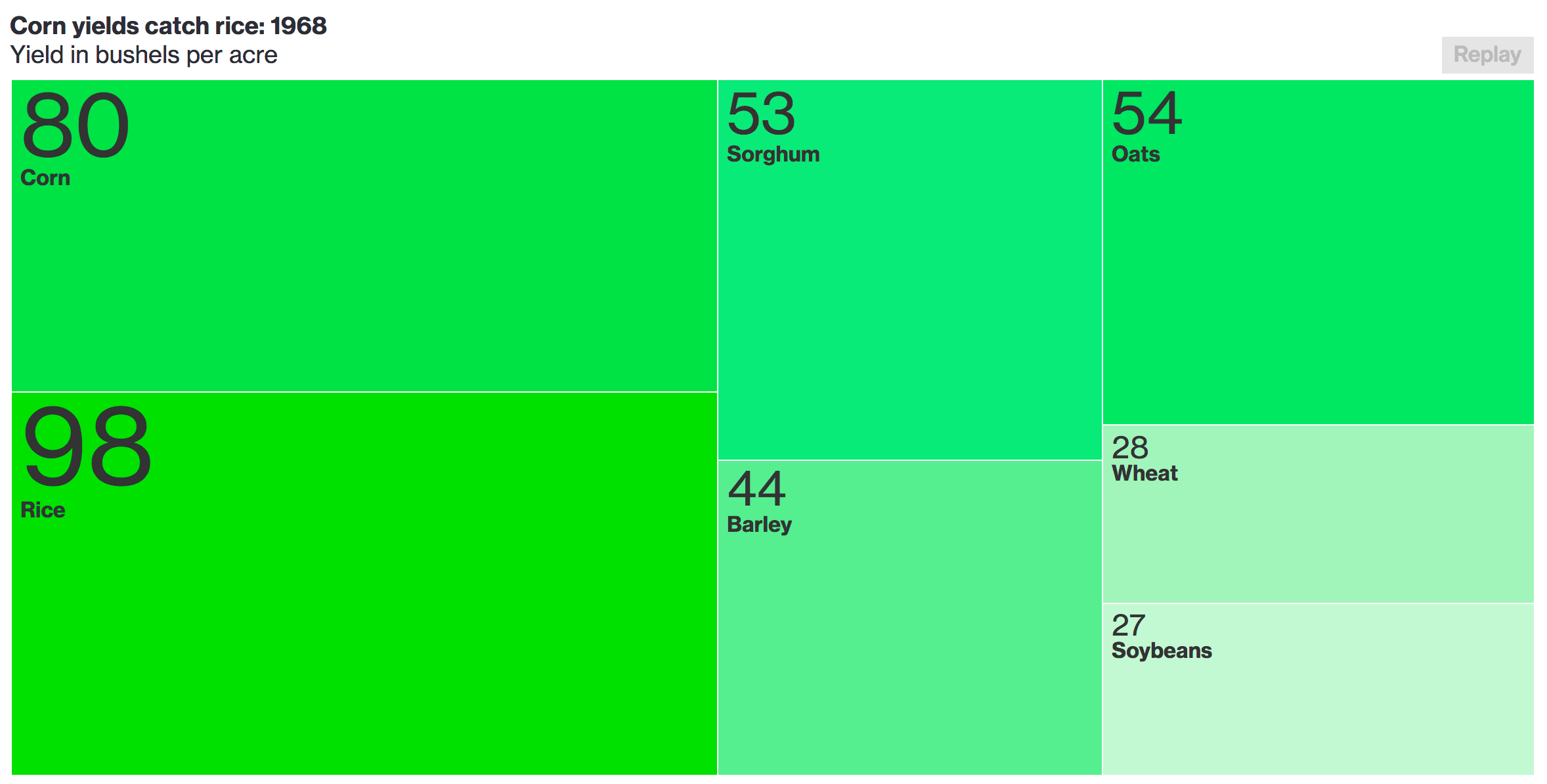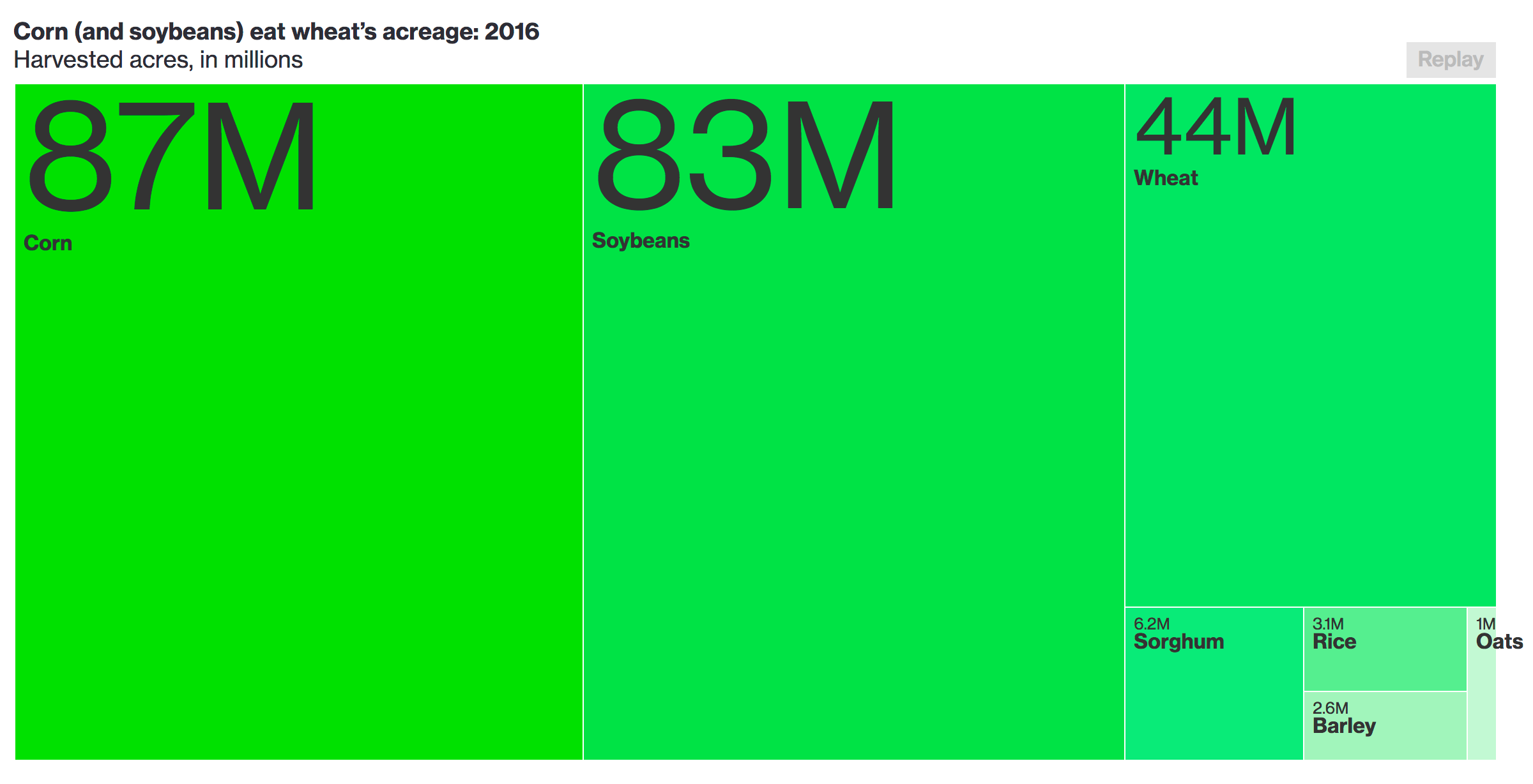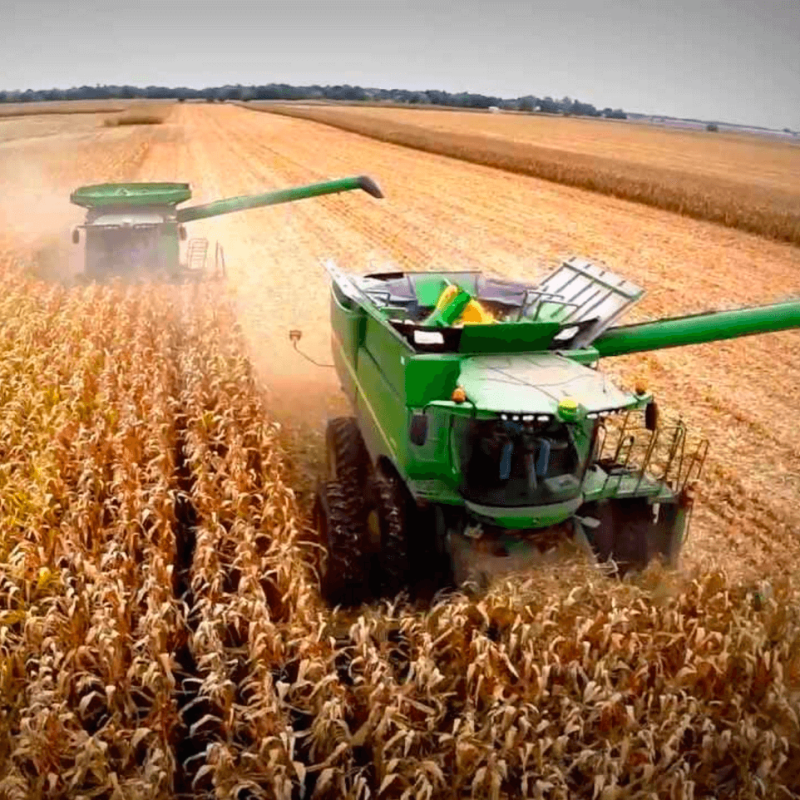Farmers who had long rotated plantings among a diverse group of grains are increasingly turning to a single one. Corn has always been a mainstay of U.S. agriculture, but its increasing profitability has driven up corn’s share of total production, while grains such as wheat, oats and sorghum have steadily fallen, according to a Bloomberg analysis of a half-century of crop data.
…
Corn will make up 68 percent of this year’s projected harvest of major U.S. grains and oilseeds this year, according to data the U.S. Department of Agriculture…. That’s up from 47 percent in 1968. New markets and technology have made corn more profitable compared to other crops, which is why longtime farmers once devoted to competitive grains have switched to the nation’s number-one source for biofuels and cattle feed.
…
Pushing along the economics were shifts in technology and markets. The U.S. approved genetically modified (GMO) corn and soybeans for planting in 1995. That reduced those crops’ risk of disease and simplified their cultivation, gains that weren’t matched in non-GMO wheat and other grains.


The GLP aggregated and excerpted this blog/article to reflect the diversity of news, opinion, and analysis. Read full, original post: The Crop That Ate America































